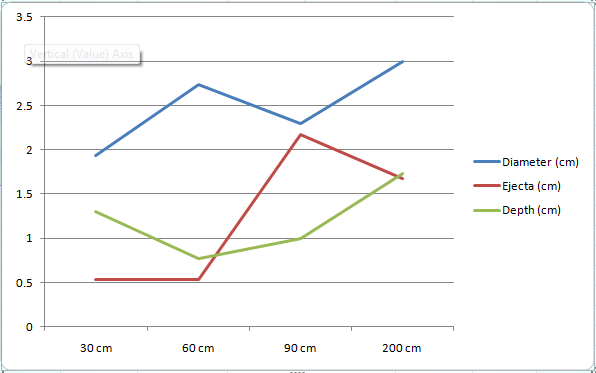Acid rain is yet another form of pollution. Caused by burning coal, driving cars, erupting volcanoes, and other means – both natural and man-made, acid rain can cause serious harm to the animals and people around it. Acid rain is caused by an excess of nitric and sulfuric acids in the atmosphere. When it falls down in the form of rain, or is combined with dust, it affects the environment around it in negative ways. When you add acid to ponds and lakes, aquatic life is put into danger. Fish die out and those that eat them must starve. When acid lands in soil, many plants cannot survive, and herbivores do not have enough food. The effects of acid rain snowball out of control, like a wave of dominoes. Acid rain can destroy a whole way of living for the animals living in one area. However, many scientists are trying to figure out ways of preventing this big problem. Acid rain is an issue we must all try to change.
When gasses such as carbon dioxide, carbon monoxide, and substances like lead and other air pollutants are released into the atmosphere, acid rain is produced. Acid rain is the product of this pollution: an excess of nitric and sulfuric acids is spread over large areas of land through rain (in wet places) and dust (in dry places). There are many reasons why acid rain is caused – both man-made and natural. Erupting volcanoes and rotting plants can cause the toxic gasses to go up into the atmosphere, but the majority of acid rain is caused by humans. When we drive cars and ride in planes and trains and boats, we release carbon dioxide and other dangerous substances into the air. Acid rain can fall in two categories: wet deposition and dry deposition. Wet deposition occurs when acidic chemicals are blown into wet areas, which results in acidic water. Dry deposition happens in very dry areas, where there isn’t very much rain. The acid chemicals end up being distributed in dust and dirt, instead of water. Both of these ways of releasing acid rain into the environment are very harmful for people and animals.
Acid rain can affect both humans and animals, but it is most dangerous towards aquatic life. As acidic water flows downhill, it deposits aluminum in nearby streams, rivers, and lakes. When it settles in a lake, the pH of that lake goes down, becoming more and more acidic. This means that even as more acid is being added to underwater ecosystems, toxic aluminum is being deposited there as well. Many fish and other marine animals cannot survive in areas of low pH. At a pH of five, most fish eggs will find it impossible to hatch, and at any pH lower than five, many more adult fish will die. Some animals, such as frogs, have developed a tolerance toward acid. However, the insects they depend on for food may not be able to withstand water with a low pH. So even if a particular species can survive in acidic conditions, the prey they catch cannot, so they will die anyway. Not only is the livelihood of frogs and fish damaged, but birds are affected, too. Snails find it difficult to survive in areas of high acidity, because they depend on calcium found in soil. Much of this mineral is lost when it is replaced by acid. If snails don’t find enough calcium in their habitat, they cannot survive, and die out. This causes a problem for the birds. Snails are a high source of calcium, and eating them helps birds to lay strong eggs. When there aren’t enough snails for birds to eat, then the eggs, the birds can’t get enough calcium in their systems, and they are forced to lay eggs with very thin shells. Many eggs are unable to hatch because of shell breakage and other accidents. If the population of birds is depleted, then there is less food for predators who depend on birds to eat. This, in turn, affects the carnivore population. It is one big chain reaction.
There are many good things being done to help reduce the amount of acid rain produced by factories and cars. According to the website epa.gov, instruments such as catalytic converters help reduce the amount of harmful gasses released into the atmosphere when we drive. Also, “scrubbers” are used to reduce the amount of nitric acids that escape from factory smokestacks. Not only can we try to reduce the amount of nitric and sulfuric acids we produce, but we can also attempt to prevent them from reaching the air. We can do this by using alternative energy sources such as solar, wind, and hydroelectric power. These are examples of “green” energy sources, and they have very minimal negative impacts on the environment.
Acid rain is a serious issue that we all need to be aware about. It is an overdose of nitric and sulfuric acids in the atmosphere that become absorbed into the natural environment. It is caused by cars, factories, and other sources that produce exhaust. Acid rain affects the natural habitats of animals and people around it in very negative ways, and can damage a whole way of living in an ecosystem. Fortunately, scientists are learning how they can help prevent the spread of acid rain, and, in doing so, help our environment.
Works Cited
“Acid Rain.” Protecting the Home we Live in: Environmental Issues. Novi Meadows Elementary, 2002. Web. 28 Nov. 2011. <http://library.thinkquest.org/CR0215471/acid_rain.htm>.
“Acid Rain.” US Environmental Protection Agency. US EPA, 24 Mar. 2011. Web. 28 Nov. 2011. <http://www.epa.gov/acidrain/index.html>.
“Acid Rain/Prevention.” PB Works. PB Works, 2007. Web. 6 Dec. 2011. <http://acidrain.pbworks.com/w/page/1319114/Prevention>.





























